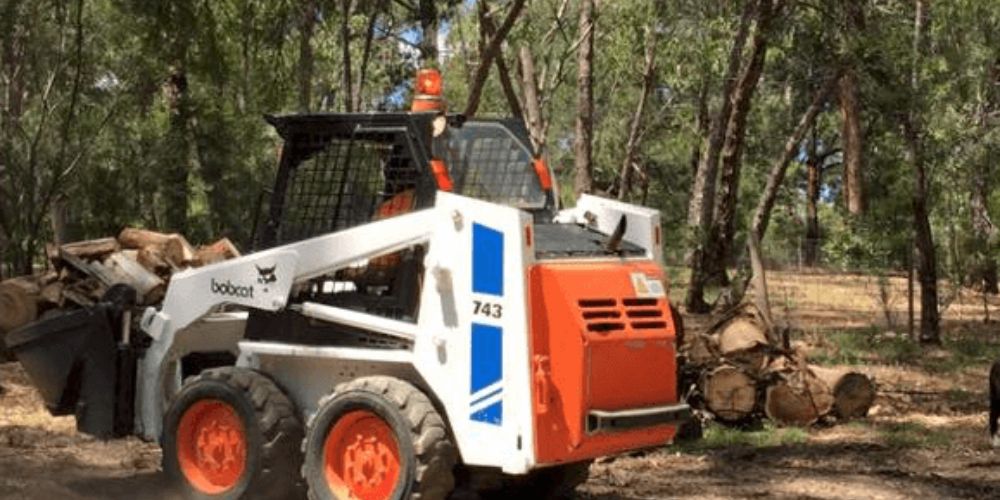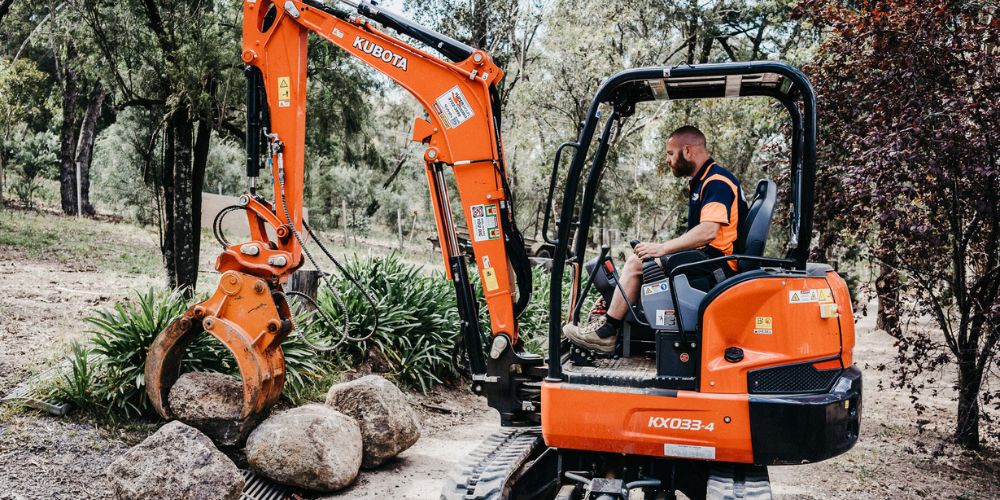Skid steer Loader vs Excavator - What’s The Difference?
Skid steer loaders and excavators are two of the most widely used construction machines, both of which are known for making what is likely one of the most tedious and challenging earth works tasks for workers easier and more comfortable.
Many of our clients are unsure whether using a skid steer or a full-fledged excavator will be better. The answer is unquestionably dependent on the project at hand. The skid steer’s manoeuvrability makes it specifically well-suited to jobs requiring material to be piled up or spread out when used in conjunction with one of our tip trucks or when navigating tricky turns. However, the excavator has its speciality.
Read further as we quickly explain the difference between a skid steer loader and an excavator.
Table of Contents

What is a Skid steer Loader?
Skid steers are a popular compact machine for digging, pushing, and moving dirt. The machines’ versatility allows them to play an essential role in backhoeing, sidewalk milling, tilling, cement mixing, site cleaning, rubbish removal, wood chipping, and various other tasks. They are distinguished from excavators by their fixed carriage.
The skid steer loader will be equipped with either four wheels or two tracks. Both the front and back axles move in unison. Still, operators can control each individually from the wheels on the opposite side of the machine.
The wheels stay fixed, straight alignment and don’t turn. To turn the device, a skid steer controller must raise the speed of one of the wheels for it to skid or drag across the ground as the machine rotates.
What is a Skid Steer Used For?
Traditionally, operators use the bucket of a skid steer to lift or transport heavy materials.
Snow blowers, mowers, stump grinders, drills, sweepers, and even backhoes can be attached to skid steers. However, given our current fleet of excavators and other machines, we believe the skid steer is best suited for jobs involving the attachments we offer.
Keeping this in mind, we recommend our skid steers for the following jobs:
- Pool excavation
- Backfilling
- Site cleanup
- Waste removal
- Backyard tasks
- Trenching and Drilling
- Landscaping
Features of a Skid Steer Loader
Flexibility
Skid steers are flexible machines that can be equipped with a variety of attachments.
Capacity
The skid loader is much smaller and lighter than larger loaders and excavators, making it very transportable and easy to maneuver on site.
Performance
Despite their smaller size, most skid steer loaders have a higher hydraulic flow rate for greater efficiency.
Accessibility
Skid steer operators have greater visibility without a bulky front loader, allowing for greater precision and efficiency when completing work.
Ease of use
Skid steers can transform on a dime because their steering is self-sufficient on each side; therefore, while the wheels (or tracks) are moving forwards on each side, they are sliding backwards on the other, allowing for easier turning manipulation.
Mechanically Stabilized Earth
Mechanically Stabilized Earth (MSE) walls, also known as geowalls, are low-maintenance alternatives to traditional concrete retaining walls. The fact that they do not involve using heavy equipment to install is perhaps their most appealing feature. This makes them suitable for many homeowners, including those who live in difficult-to-reach areas where heavy equipment cannot be used.
Skid steers’ only disadvantage is their limited size and power, which makes them inappropriate for larger jobs like drilling large holes into the ground.
Extra Info:
Skid steer loaders are often referred to as Bobcat! Bobcat is a skid steer manufacturing company like John Deer and Caterpillar and Kubota. Basically, skid steer loaders are equipments and Bobcat is the brand.

What is an Excavator?
Excavators are a type of machine used for demolition, earthmoving, trenching, digging, and tunnelling. It is one of Australia’s most widely used and popular machines.
The primary function of an excavator is to excavate various types of soil. Then, with the bucket, use the hydraulic system to lift the soil towards the machine, primarily relocating the soil (earthmoving) to a nearby area on site or onto a truck for removal.
A conventional excavator is a way to go if you need quick work on a larger project and have easy access to the site. With an excavator, large-scale construction, building demolition, and significant landscaping projects can be completed more efficiently and quickly.
What are Excavators Used For?
Excavators have a wide range of applications and attachments. These machines have different sizes and setups of booms, sticks, and buckets. With just an excavator, you can complete various tasks required in so many heavy industries.
Here are some of the essential uses of excavators:
Clearing of Land
Before new houses and roads can be built, land clearing may be required, and this is a task that necessitates the correct equipment. When a large amount of land cleaning or a lot of energy is required, excavators shine. The word excavator is perhaps most often associated with the demolition of buildings.
Demolition Works
Demolition of old structures is among the most hazardous tasks in the construction industry. It should be performed only with the proper equipment and training. There are excavators designed explicitly for tearing down old buildings that can help make the job go as smoothly as possible.
Digging
Excavators are often the go-to equipment on digging projects. Excavators are ideal for construction projects, mining, and landscaping because they are much faster than other digging techniques.
Lifting Heavy Materials
Heavy lifting is a job that excavators excel at. Excavators can transport heavy loads of various materials, saving you time, energy, and funds.
Why Are Excavators Commonly Used Equipment Among Earthmoving Contractors?
- Rough terrain is simple to navigate
- Profitability has increased.
- Lessens the demand for labour costs
- Extremely adaptable
- Ensure project is delivered on time
- Increases brand value
- Improves accuracy and dependability
Skid steer loaders vs Excavators - How Do They Differ Then?
Excavators are large, powerful machines. Our fleet’s sizes range from 1.5 to 13 tonnes, and they’re ideal for heavy digging or lifting. Skidsteer Loaders, on the other hand, typically have a bucket that is angled away from the operator. The first digs and pulls dirt towards the machine, while the second pushes the debris away.
Considering that you only had one piece of equipment, it’s safe to say that an excavator would be better suited to your needs. There are exclusions for particular jobs, but a Skidsteer Loader is most commonly used as an auxiliary vehicle that allows the easy accomplishment of specific projects.
Key Takeaways
Being able to tell which to use between the two interesting earthmoving works equipment depends on the range and complexity of the project.
Indeed, no matter the project’s complexity, effective planning is required to coordinate all the various activities. Successful project management is achieved by systematically allocating resources, assembling, organizing, equipping various teams, and allocating specific tasks.
It would be best to ask for expert earthmovers’ help if you plan to build some earthmoving works and hold your earthmoving services.
